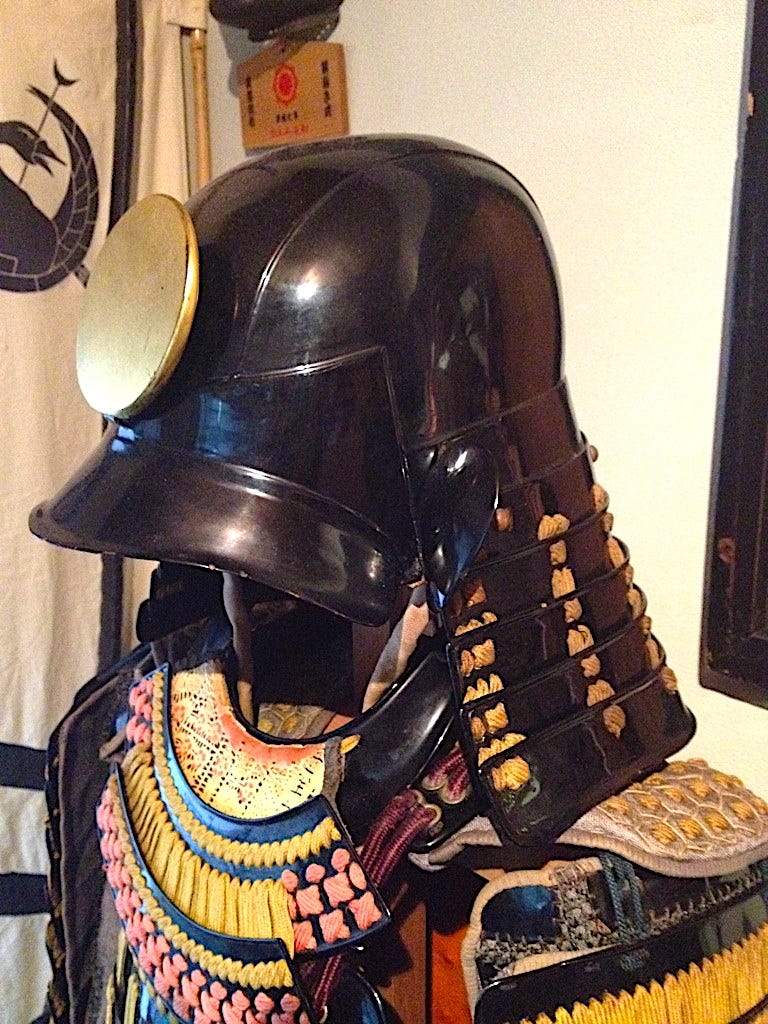Zunari Kabuto Samurai Helmets
Zunari Kabuto are a type of samurai helmet believed to have originated in the late Heian period. The name zunari literally means head, or skull-shaped helmet. Zunari kabuto came into widespread use during the Warring States period as they consisted of only 3 to 5 steel plates, meaning they were relatively quick and inexpensive to manufacture, while providing superb levels of protection. At the end of the Muromachi period, when battles became large-scale and the demand for Zunari helmets increased, rapid improvements were made to the helmet bowls. The zunari bowls of this period have a more rounded silhouette than the older models. Zunari were designed to withstand strong impact from weapons such as spears, blades and even matchlock gun fire. Because of their fine protective properties and relative ease of wearing, they were used by samurai of all ranks. The Ii and the Hosokawa clans in particular are known to have preferred zunari helmets.
The standard Zunari kabuto features a long, medium width central plate known as the zujyo-no-ita running vertically from the top of the forehead to the back of the head, just above the neckline. At the front, protecting the top of the forehead to eyebrow level is another trapezoid shaped plate, known as the mabisashi. From the mabisashi’s lower left side around the back of the head to the right side, is a long narrow plate running horizontally around the base of the bowl, known as the koshi-ita or koshi-maki. The koshi-ita also carries the shikoro, the multi-level concertina-like nape and neck guard. Two semi-circular side plates, waki-ita, also hammered into a concave shape fill the left and right sides. The slight curvature of the main zujyo-no-ita and the two side pieces greatly increases the strength of the helmets. Most zunari would be completed with coatings of urushi lacquer, strengthening them and preventing rusting.
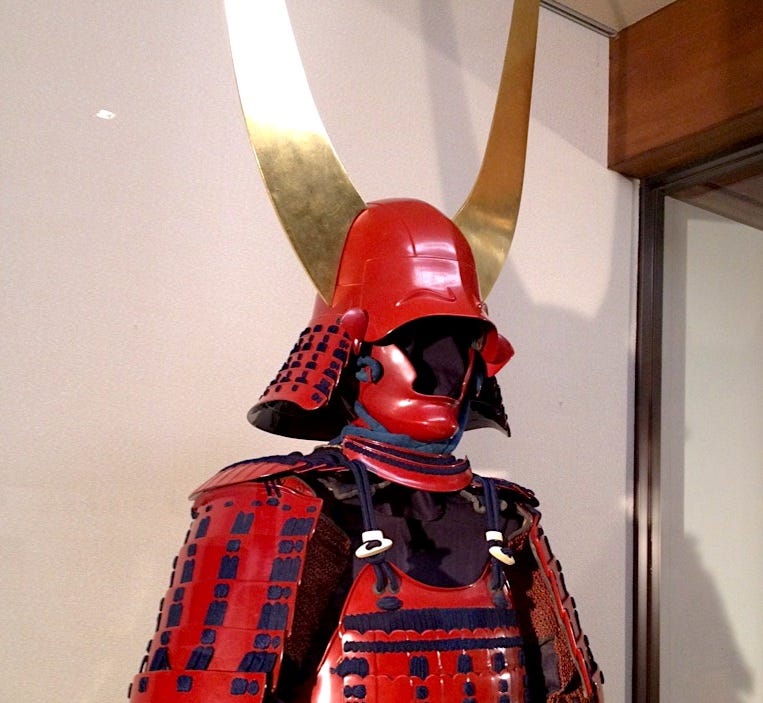
The zunari would usually be fitted with a single or two pronged tsuno-moto (male) or more rarely in the eastern Kanto region of Japan, a harai-tate dai (female type) insert bracket holding the maedate crest device.
There are two basic forms of zunari helmets, the Hineo-nari, with the mabisashi overlapping the overhead zujyo-no-ita, and the Etchu zunari, with the zujyo-no-ita overlapping the frontal mabisashi. Some zunari have just the single mabisashi plate fronting the helmet, while some feature a separate visor-like tsubo out front, adding a little more protection. Those with single plate mabisashi sometimes have decorative relief or lacquered eyebrows and wrinkles to enhance the helmet. With so many katchu-shi armorers making the popular zunari, there were naturally differences in bowl depth, mabisashi shaping, fukigaeshi (the ear-like flanges on samurai helmets) size and shape etc. Like with most helmets, they were lined with an ukebari hemp cotton sewn lining, and here we find another structural difference: one in which the koshi-ita goes only as far the visor, meaning that the ukebari lining is sewn directly to the base of the visor. The threads can be seen along the lower edge of the mabisashi visor. The other, more common type has the koshi-ita running behind the front visor, and the lining is sewn onto this rim. The koshi-ita being positioned behind the frontal plate does provide for a little extra protection, bringing the helmet forward of the face.

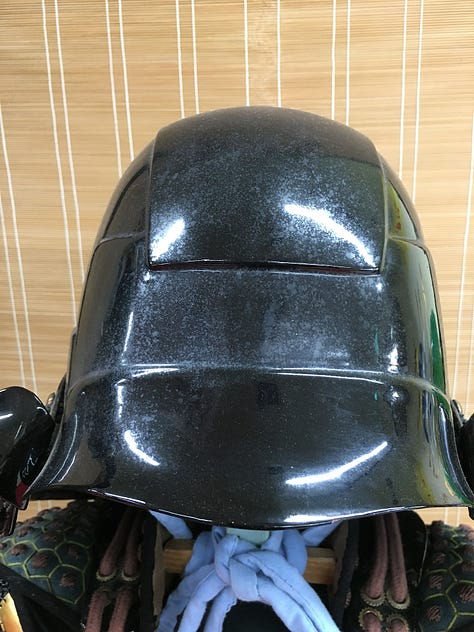
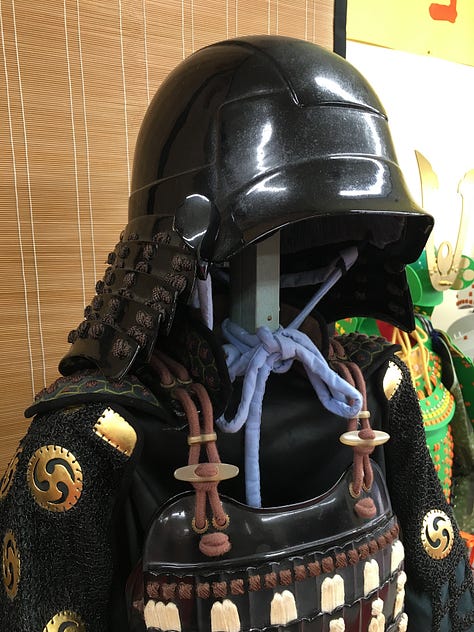
Again, the koshi-ita also carried the shikoro neck guards, attached with split pins at various points, the inner pins then covered with a patch of deerskin. Most of the shikoro are 1- to 5-tiered lames of the standard structure, but occasionally split shikoro were also used, but these appear to have been fashionable mostly in western Japan. The author cannot find an advantage for having split shikoro as the splitting of the parts could have caught on parts of the upper armour when worn, would have increased noise and have lessened the ability to protect from blows.

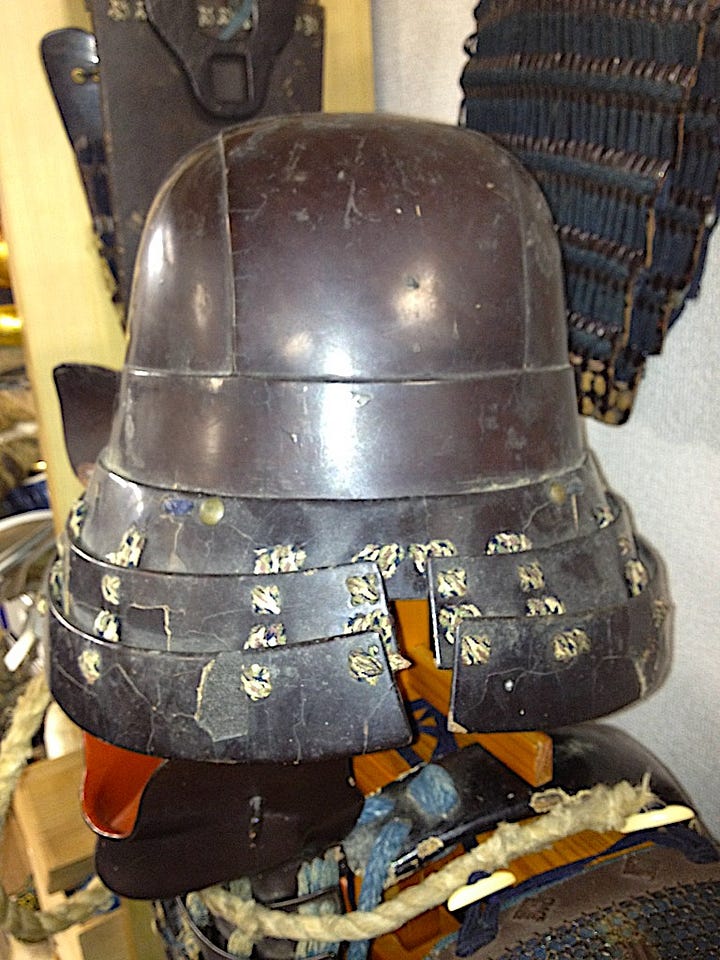
Above, a zunari with a three lame shikoro, split at the rear. Below, a Hineo and two examples of Etchu zunari helmets, with the top plate overlapping the forward visor plate. Photos © 2022 Chris Glenn
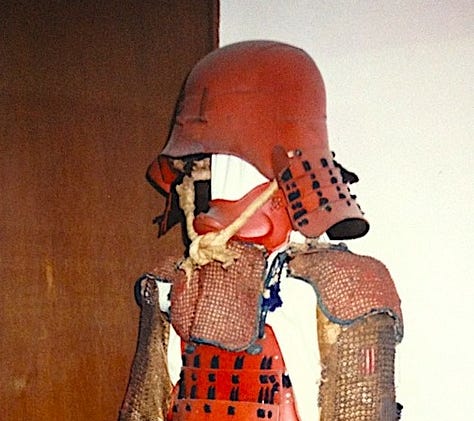
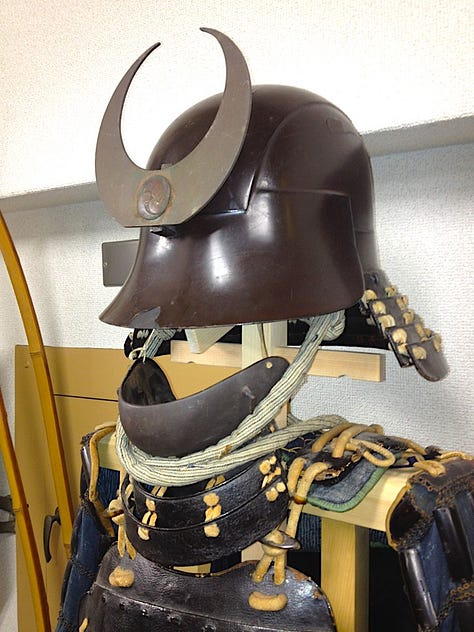

In many cases, as with samurai armour, the type and style of helmet used was mostly a matter of personal choice. The samurai would order the type and style he felt most comfortable with and could afford.
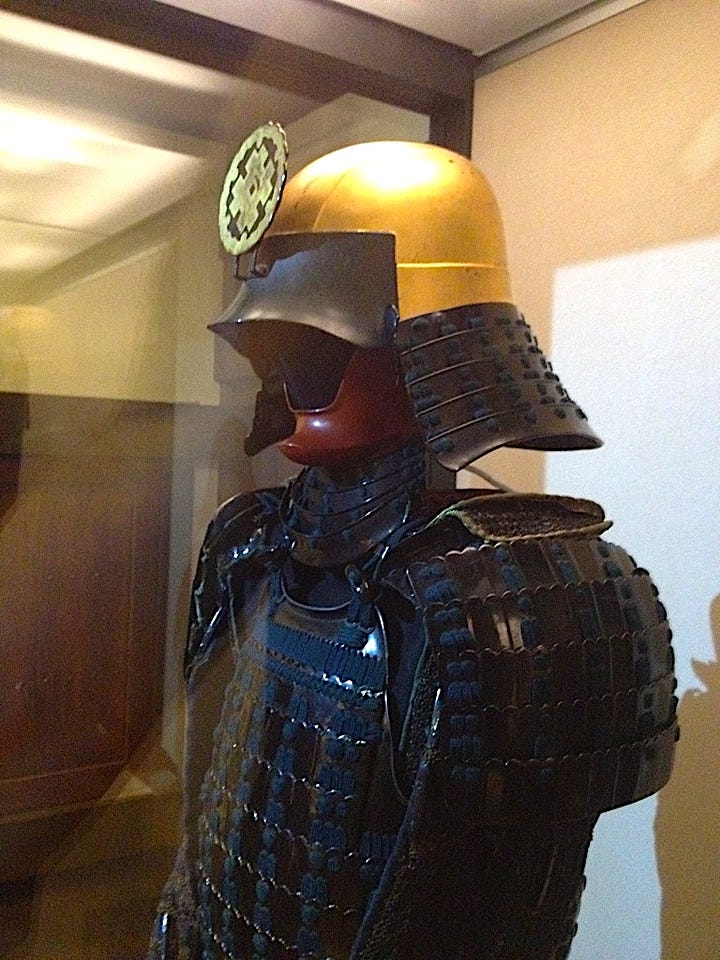

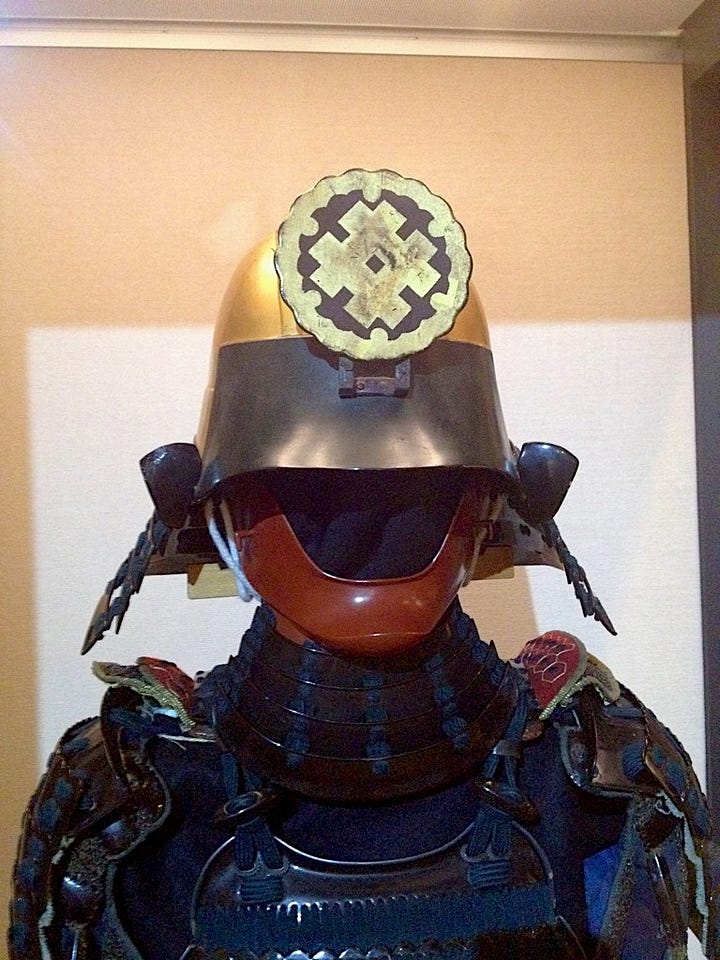
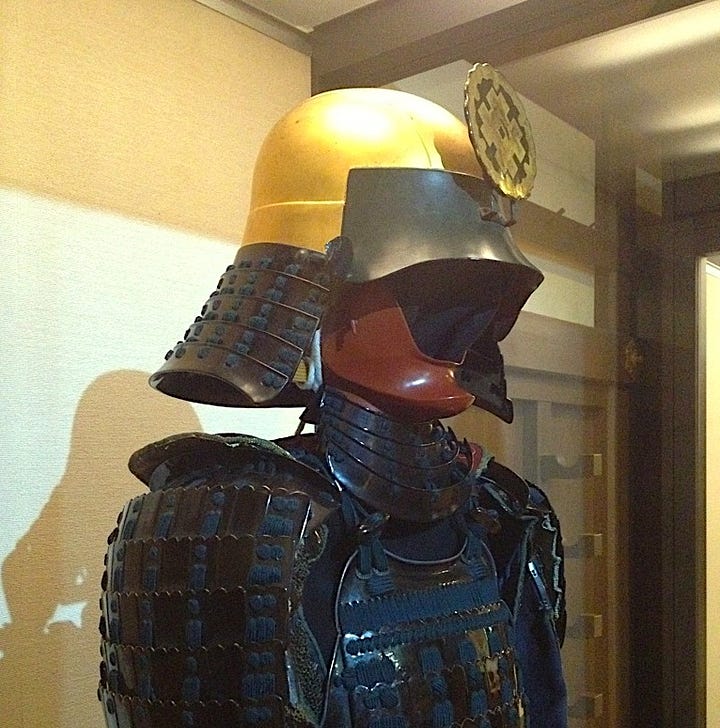
Fine looking zunari in gold and black urushi lacquer, featuring a 5 lame shikoro, and a two pronged tsuno-moto holding a round maedate crest. Nagoya Castle Collection. Photo © 2017 Chris Glenn.
During the late Sengoku, and particularly during the peaceful Edo period, zunari kabuto bowls, and older zunari in particular were often remodeled or used as a mounting base for kawari kabuto, being the fanciful strange and extravagant helmets, meaning there are fewer Sengoku or older period zunari remaining in original condition.




